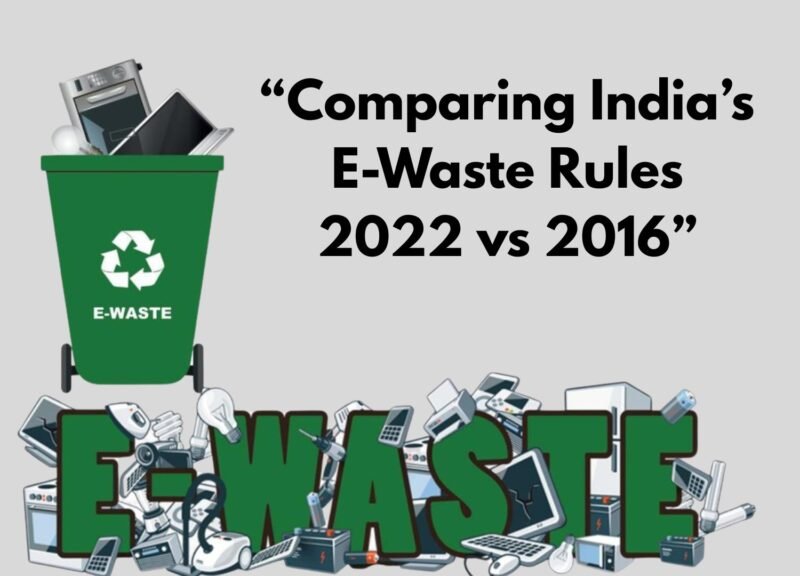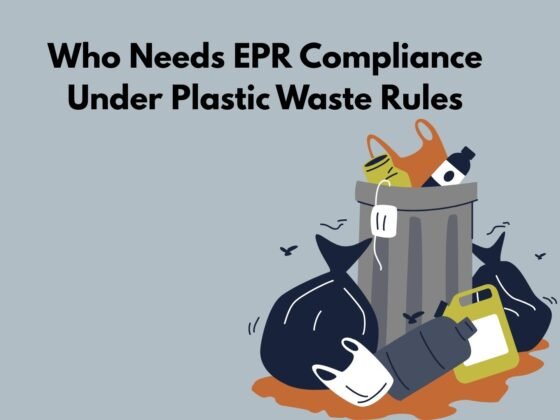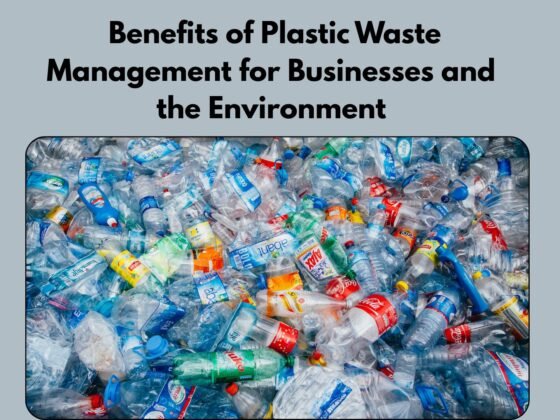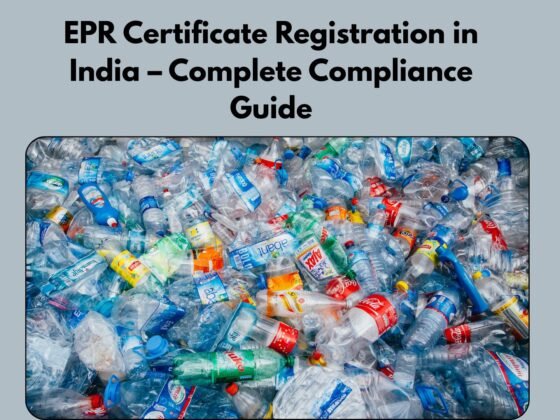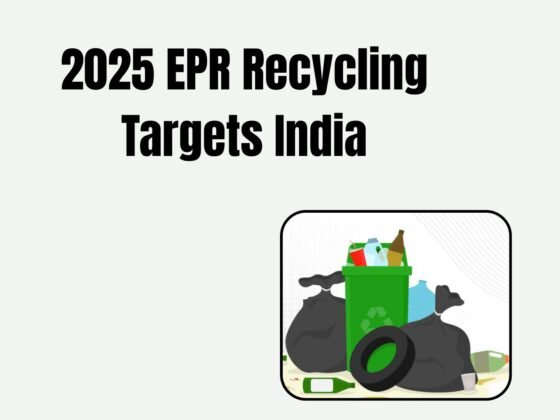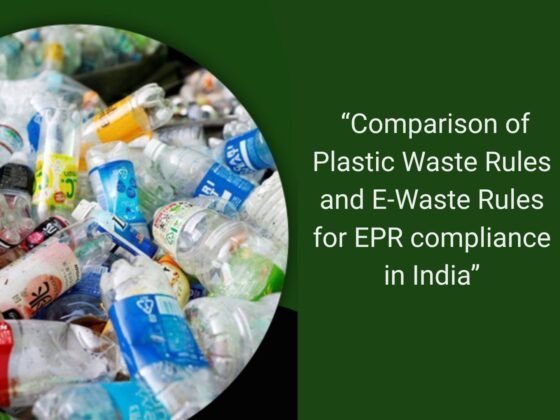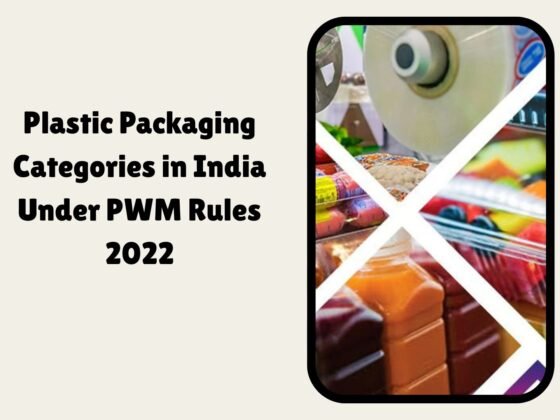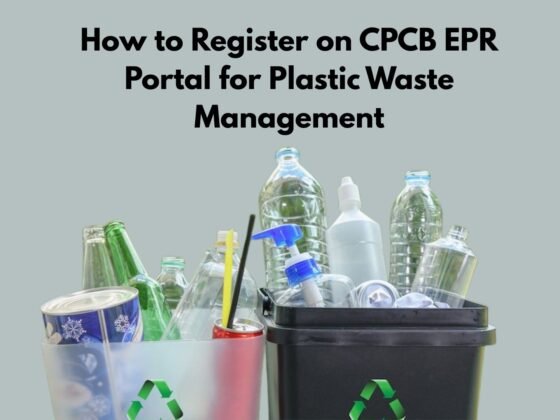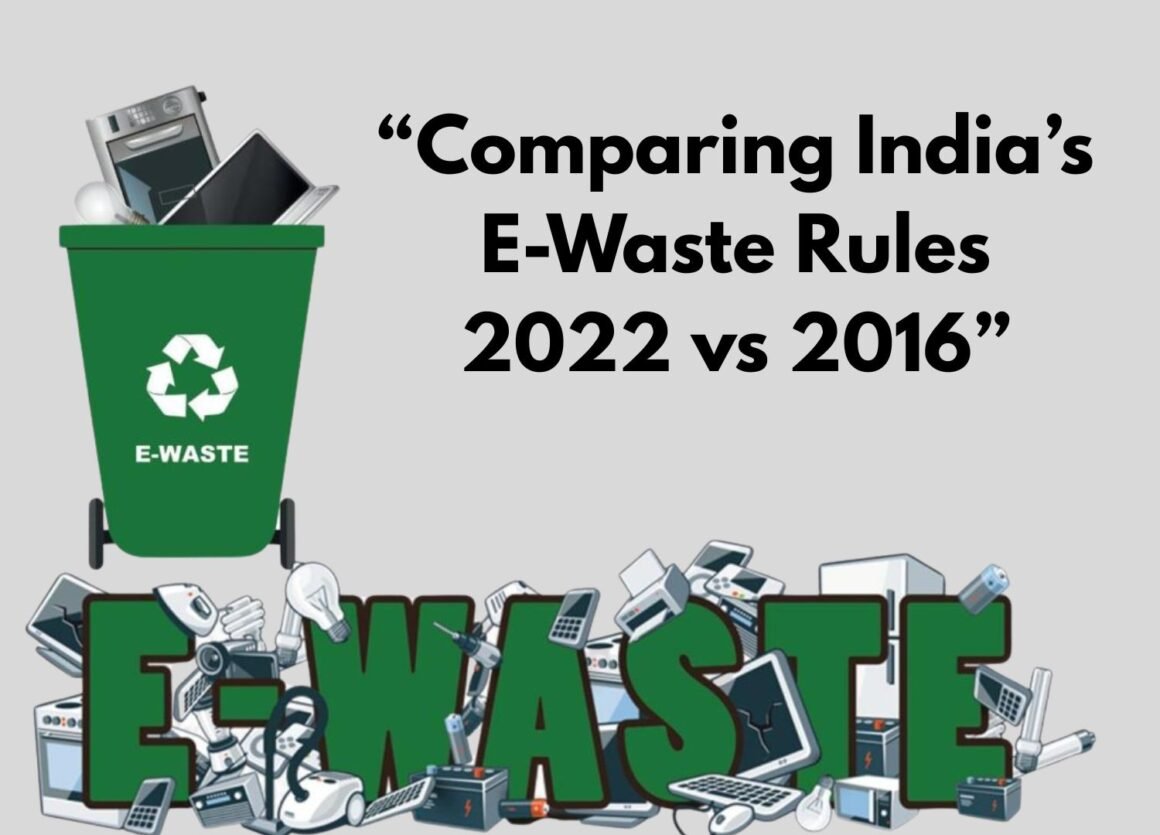
Comparing India’s E-Waste Rules 2022 vs 2016
In recent years, India has witnessed a dramatic surge in electronic consumption — and with it, an equally concerning spike in electronic waste. Old phones, computers, televisions, and appliances are piling up faster than they can be responsibly recycled.
Recognising this, the Ministry of Environment, Forest and Climate Change (MoEFCC) introduced the Comparing India’s E-Waste Rules 2022 vs 2016. The update seeks to modernise India’s e-waste framework with digital transparency, stricter producer accountability, and broader coverage.
But how exactly do the 2022 Rules differ from their 2016 predecessor? And what do these changes mean for producers, recyclers, consumers, and India’s informal e-waste sector?
Why the 2016 Rules Needed an Upgrade
When the E-Waste (Management) Rules, 2016 came into effect, they were hailed as a progressive step in environmental governance. They introduced concepts like Extended Producer Responsibility (EPR) and defined the roles of producers, dismantlers, refurbishers, and recyclers. However, implementation lagged behind ambition.
Between 2016 and 2021, India’s e-waste generation grew by more than 40%, reaching 1.6 million tonnes annually, according to CPCB estimates. Yet, only 10-15% of this was processed by authorized recyclers. The rest continued to flow through informal channels — unsafe backyard workshops that extracted metals using acids or open burning. The lack of a unified, trackable digital system made monitoring compliance nearly impossible.
The 2022 Rules were introduced to fix these gaps: digital registration, verifiable EPR certificates, and strong environmental compensation provisions now form the backbone of India’s modern e-waste management framework.
Expanded Scope: A Future-Ready Definition
The 2016 Rules covered 21 categories of electrical and electronic equipment (EEE) such as computers, mobile phones, and consumer electronics. But technology evolved rapidly. Devices like routers, tablets, LED lights, and even solar photovoltaic (PV) panels became mainstream — yet fell outside regulatory purview.
The 2022 Rules expand this list dramatically to over 100 categories, now including:
- Solar PV modules and cells
- Tablets, modems, routers, and network devices
- LED lamps and air purifiers
- Storage devices and smart home equipment
This ensures India’s policy framework stays relevant to the modern technology ecosystem and prevents e-waste from emerging product lines slipping through legal gaps.
The Shift to Digital: Registration and Oversight
One of the most revolutionary changes introduced in 2022 is mandatory online registration on the CPCB’s digital portal for all stakeholders — producers, manufacturers, refurbishers, and recyclers. Under the 2016 regime, entities sought separate authorizations from State Pollution Control Boards (SPCBs), creating fragmentation and administrative delays.
Now, with a unified digital system:
- All applications, returns, and reports are filed through a central online dashboard.
- No entity can operate without CPCB registration.
- Transactions with unregistered entities are strictly prohibited.
This digital centralization enhances transparency, prevents duplication of licenses, and gives regulators real-time access to recycling data.
Reinventing EPR: From Plans to Performance
Under the 2016 Rules, producers were required to submit an EPR plan outlining how they intended to collect and recycle e-waste. However, these plans often remained on paper. The absence of measurable proof of recycling made enforcement weak.
The 2022 Rules fix this by introducing EPR Certificates, a tradable digital token representing the quantity of e-waste actually recycled. Here’s how it works:
- Registered recyclers generate certificates based on the verified amount of e-waste processed.
- Producers must purchase these certificates in proportion to their annual EPR targets.
- The CPCB portal audits and tracks every transaction.
This mechanism transforms EPR from a theoretical obligation into a results-driven system. Producers can no longer claim compliance without evidence of real recycling.
Simplifying Responsibilities for Bulk Consumers
In the earlier framework, bulk consumers — such as government departments, corporate offices, and institutions — had to maintain detailed e-waste inventories and file annual reports. The 2022 Rules relieve them from this administrative burden. Their sole responsibility now is to ensure that their discarded electronics go only to CPCB-registered recyclers or refurbishers.
This simplification aims to boost compliance by making the process practical and less bureaucratic.
Environmental Compensation: A Financial Deterrent
Perhaps the most significant deterrent introduced in 2022 is the concept of Environmental Compensation (EC). While the 2016 Rules relied solely on penalties under the Environment (Protection) Act, 1986, the 2022 framework allows CPCB to impose financial compensation directly on violators.
This means: Comparing India’s E-Waste Rules 2022 vs 2016
- Producers failing to meet EPR targets face immediate monetary penalties.
- Entities aiding non-compliance (e.g., dealing with unregistered recyclers) can also be fined.
- Compensation amounts are linked to the severity and duration of violation.
This mechanism brings speed and deterrence to enforcement, moving beyond lengthy legal proceedings.
Addressing the Informal Sector Challenge
India’s e-waste ecosystem has long been dominated by the informal sector, which employs thousands of unregistered workers in cities like Delhi, Moradabad, and Meerut. Though this sector provides livelihood, its crude recycling methods release toxic heavy metals such as lead, mercury, and cadmium.
The 2022 Rules attempt to integrate this sector into the formal economy by:
- Mandating that all e-waste must flow through registered collection channels.
- Making it illegal for producers or bulk consumers to sell to unregistered handlers.
- Encouraging recyclers to partner with informal collectors for collection, while ensuring environmentally sound processing.
This policy shift recognizes the economic role of informal recyclers while steering them toward safer practices.
Exemptions and Interlinked Waste Frameworks
The 2022 Rules provide exemptions for micro enterprises, acknowledging their limited operational capacity and financial resources. They also clarify overlaps with other waste management frameworks: battery waste and plastic packaging waste are now governed by separate rules to avoid confusion and duplication of reporting.
This interconnected approach promotes regulatory clarity while ensuring each waste stream receives specialized treatment.
What Remains Unchanged: Comparing India’s E-Waste Rules 2022 vs 2016
While the 2022 version redefines the operational structure, it retains key foundational principles:
- The philosophy of Extended Producer Responsibility continues to anchor the regime.
- Recyclers and refurbishers must still maintain environmental safeguards.
- Public awareness and safe disposal campaigns remain essential pillars.
Thus, the rules evolve without losing their original intent: creating a circular economy where producers are accountable for their products from cradle to grave.
Comparing India’s E-Waste Rules 2022 vs 2016: Implications for Stakeholders
Producers & Manufacturers
- Compliance has become quantifiable and evidence-based.
- Regular portal submissions are mandatory for maintaining certification.
- Working with unregistered recyclers can lead to penalties or suspension of EPR authorization.
Recyclers & Refurbishers
- Gain a formal role in the compliance ecosystem through sale of EPR certificates.
- CPCB verification ensures credibility but adds audit pressure.
- Growth opportunities as formal recycling gains recognition and investment.
Bulk Consumers
- Reduced paperwork, but stricter accountability on where waste goes.
- Must build partnerships only with authorized recyclers.
Comparing India’s E-Waste Rules 2022 vs 2016: Challenges Ahead
Despite its promise, the new regime faces significant hurdles:
- Implementation Gaps: Many states still lack infrastructure to handle digital reporting efficiently.
- Awareness Deficit: Small producers and informal operators remain unaware of registration obligations.
- Enforcement Weakness: Without stronger local inspection mechanisms, compliance may remain theoretical.
- Capacity Constraints: India’s total authorized recycling capacity still covers less than 50% of annual e-waste generated.
To address these, experts suggest capacity-building programs, financial incentives for formal recyclers, and aggressive awareness campaigns for both consumers and producers.
Looking Forward: Toward a Circular Digital Economy
The E-Waste (Management) Rules, 2022 represent more than an update — they signal India’s ambition to create a traceable, accountable, and circular e-waste system. By combining digital governance with environmental economics, the government is pushing toward a future where waste becomes a resource.
Comparing India’s E-Waste Rules 2022 vs 2016
But success will depend on how effectively authorities integrate the informal sector, upgrade recycling infrastructure, and maintain transparency through the CPCB portal.
The 2022 Rules are not perfect, but they are a bold step toward the right direction. As India marches toward becoming the world’s largest electronics market, robust e-waste management isn’t just an environmental necessity — it’s an economic imperative.
FOR MORE BLOGS – beyondthepunchlines.com

 Add to favorites
Add to favorites
